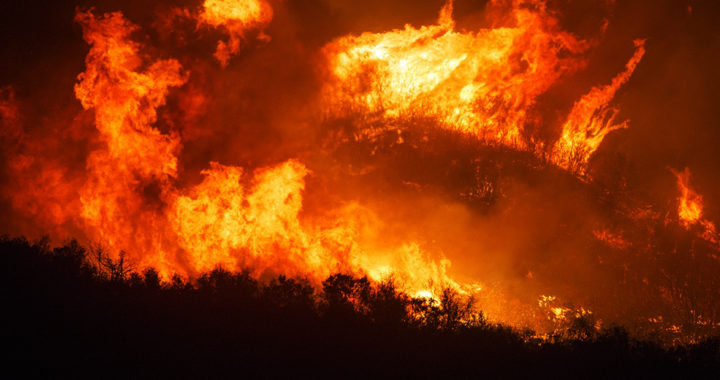The social media around late August 2019 was abuzz when appeals to save the Amazon Rainforest trended on numerous social networking platforms, particularly on Twitter, Facebook, and even the photo-sharing app Instagram. Accordingly, the rainforest has been on fire for more than two weeks already. But why exactly is the Amazon Rainforest burning?
Explaining the Reasons Why the Amazon Rainforest is Burning
The entire area covered by the rainforest receives hundreds of inches of rainfall each year. It is essentially home to some of the wettest lands on the planet. However, historic and intense wildfires are consuming the land. Several experts have cited three reasons for the phenomenon, and all of them stems from human activity.
Deforestation is one of the major culprits. Several reports noted that an area of 1.2 square miles was lost in July alone due to human activities. The most efficient way to dispose of felled trees and foliage is to leave them on the ground and let them dry under the sun. Dead and dried plant materials are one of the causes of wildfires.
The review study of S. M. Juárez-Orozco, C. Siebe, and D. Fernández y Fernández noted that there is a narrow link between deforestation and forest fires. There are wildfires directly induced by human activities. However, there are indirect ones in which discarded organic materials act as fuels that can combust under certain environmental conditions.
Another reason why the Amazon Rainforest is burning is farming. The nongovernmental organization Amazon Watch explains that cattle ranching and soy production contribute to more than three-quarters of deforestation in the Amazon. Farmers intentionally and regularly ignite land areas to clear out shrubs and maintain the farmlands easily.
The nonprofit also criticized Brazil President Jair Bolsonaro for reducing socioeconomic standard essential in preserving the Brazilian Amazon. In addition, it claimed that critical players in the agroindustrial sector are conniving with the Brazilian government to gain access to areas restricted from industrial activities.
Drought is another cause of the forest fires in the Amazon. Scientists Luiz Aragão, Jos Barlow, and Liana Anderson provided a concise explanation. Accordingly, trees have less water during droughts, and as such, their growth slows, and they are unable to absorb carbon dioxide. Furthermore, trees either shed extra leaves or die.
Remember that dead plant materials left on the ground act as fuels. Without a dense canopy to retain moisture, the forest also loses some naturally fire-preventing humidity. The interplay between drought, plant survival, and fires creates a self-reinforcing loop that makes forest fires a regular occurrence. Note that drought in Amazon has been attributed to climate change.
Summary and Takeaways on the Causes of Fires in the Amazon
Three factors cause forest fires in the Amazon. These are deforestation, agricultural practices, and drought. Note that all of these three are interconnected because they feed into each other. In other words, these factors reinforce each other, thus making forest fires a normal and regular occurrence in an otherwise fireproof environment.
Resolving the phenomenon requires addressing all of these factors. For starters, experts and advocates have called for strict measures and a strong political will to lessen or restrict human activities in the Amazon Rainforest. What this means is that government officials should penalize deforestation activities and control agricultural activities in the region.
Of course, it is important to acknowledge the natural causes of wildfires or forest fires such as lightning and weather conditions. The earth is fundamentally combustible due to the large coverage of carbon-rich vegetation, atmospheric oxygen, and natural events. However, both the natural causes and human causes of forest fires also reinforce one another.
A persistently hot and dry weather condition creates a flora environment that is more susceptible to human-induced ignition. Deforestation or the development of forested areas for human use can also result in a wildfire because they either leave combustible dead plants or encourage the growth of fire-conducive plants, thus making the environment susceptible to nature-induced combustions.
It is important to note that preserving the Amazon is essential because of its environmental and economic significance. The rainforest is home to 10 percent of wildlife species on earth, and it provides about 20 percent of oxygen. Furthermore, it is also a critical source of non-timber products with several scientific and industrial uses. The rainforest also sustains the economies of communities living within or around its vicinity.
FURTHER READINGS AND REFERENCES
- Amazon Watch. 2019. Complicity in Destruction II: How Northern Consumers and Financiers Enable Bolsonaro’s Assault on the Brazilian Amazon. Amazon Watch. Available via PDF
- Aragão, L, Barlow, J., and Anderson, L. 2018, February 14. “Amazon Rainforests That Were Once Fire-Proof Have Become Flammable.” The Conversation. Available online
- Juárez-Orozco, S. M., Siebe, C., and Fernández y Fernández, D. 2017. “Causes and Effects of Forest Fires in Tropical Rainforests: A Bibliometric Approach.” Tropical Conservation Science. 10. DOI: 10.1177/1940082917737207









